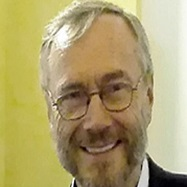Selected Papers from 3-day International Conference on Materials Science (3d-ICOMAS)
A special issue of Materials (ISSN 1996-1944).
Deadline for manuscript submissions: closed (20 February 2023) | Viewed by 2140
Special Issue Editors
Interests: materials; design; biomaterials design
Special Issues, Collections and Topics in MDPI journals
Interests: advanced metallic alloys and methods
Interests: laser diodes; scintillators; solid and nanoparticles materials characterization; EPR investigations, magnetic properties
Special Issues, Collections and Topics in MDPI journals
Special Issue Information
Dear Colleagues,
It is our great pleasure to announce a collection of papers related to the three-day International Conference on Materials Science, an international meeting on physics, chemistry, and engineering of materials that is scheduled to take place on October 26-28, 2022, in Verona, Italy.
The scope of the conference is to bring together scientists from different areas of materials science, physicists, chemists, and engineers by providing the opportunity to exchange ideas, advance knowledge, and discuss the latest trends in the field.
Conference topics are related to all aspects of scientific research related to advanced and functional materials, such as nanomaterials, electronic, and photonic materials (semiconductors, dielectrics, liquid crystals, ionic solids), ferroelectric and piezoelectric materials, ferromagnetics, multiferroics, thin-films and coatings, metals/alloys and composites, glasses, catalytic materials, polymers, energy materials, and bio- and organic materials, including both experimental and theoretical aspects.
Prof. Dr. Alexander M. Korsunsky
Prof. Dr. Tea-Sung (Terry) Jun
Prof. Dr. Slawomir Kaczmarek
Guest Editors
Manuscript Submission Information
Manuscripts should be submitted online at www.mdpi.com by registering and logging in to this website. Once you are registered, click here to go to the submission form. Manuscripts can be submitted until the deadline. All submissions that pass pre-check are peer-reviewed. Accepted papers will be published continuously in the journal (as soon as accepted) and will be listed together on the special issue website. Research articles, review articles as well as short communications are invited. For planned papers, a title and short abstract (about 100 words) can be sent to the Editorial Office for announcement on this website.
Submitted manuscripts should not have been published previously, nor be under consideration for publication elsewhere (except conference proceedings papers). All manuscripts are thoroughly refereed through a single-blind peer-review process. A guide for authors and other relevant information for submission of manuscripts is available on the Instructions for Authors page. Materials is an international peer-reviewed open access semimonthly journal published by MDPI.
Please visit the Instructions for Authors page before submitting a manuscript. The Article Processing Charge (APC) for publication in this open access journal is 2600 CHF (Swiss Francs). Submitted papers should be well formatted and use good English. Authors may use MDPI's English editing service prior to publication or during author revisions.
Keywords
- advanced materials
- functional materials
- nanomaterials
- photonic materials
- energy materials
- bio-materials








